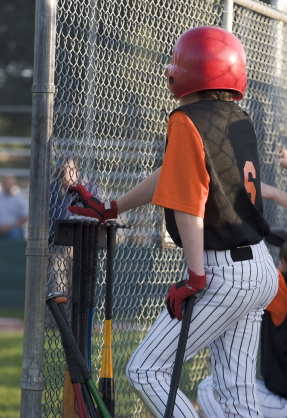There are a number of steps baseball parents, coaches and athletes can take before practices and games to reduce the risk of injury:
Make sure your child always takes time to warm up and stretch. Research shows that cold muscles are more injury prone. While a proper warm-up is important for all youth athletes, it is particularly critical during a growth spurt, when your child's muscles and tendons are tight. Experts, including the American Academy of Orthopedic Surgeons, now recommend dynamic, and static, stretching:
- Jumping jacks, jogging or walking in place for 3 to 5 minutes to
get the blood moving through the muscles and ligame
 nts.
nts. - Then slowly and gently stretching, holding each stretch for 30 seconds. Have your child do stretches for the position he plays: for instance, pitchers should concentrate on stretching their arms, shoulders, neck and wrists, in addition to stretching their legs; catchers should concentrate on stretching their legs, knees, feet and back
Coaches need to develop an overall-prevention mentality, including improved warm-up, cool-down, taping unstable ankles, rehabilitation, promoting fair play, and exercises to improve joint stability, flexibility, strength, coordination, reaction time and endurance.
Make sure that your child eases into throwing and swinging. Your child shouldn't start throwing the ball or taking full swings during batting practice right away, especially in cold weather. He should begin by "soft tossing" and then gradually increase the distance and velocity of his throws as his arm gets loose and warm.
Inspect the playing field. The playing field can pose a risk of injury. Before every game or practice, a parent or the coach should check for holes, ruts, glass, or any other unsafe conditions. Players should be reminded to bring any holes that they encounter on the field to the attention of the coach or umpire. There should also be screens in front of the dugouts.








